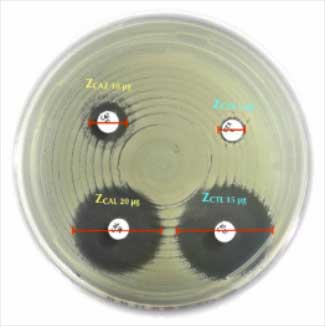Liofilchem® Imipenem-relebactam I/R Antimicrobial Susceptibility Discs, 35 µg
Catalog No :
CAS Number :
Brand :
In Stock
Specifications:
| Application | Clinical microbiology |
| Storage Temperature | -20°C |
| Product Type | Antibiotic Disc |
| Product Brand | Liofilchem |
| Product Grade | Microbiology grade |
The Liofilchem® Imipenem-Relebactam (I/R) Antimicrobial Susceptibility Discs, 35 µg, are designed for phenotypic detection of bacterial susceptibility to imipenem in combination with relebactam, a β-lactamase inhibitor. This diagnostic tool is particularly effective for identifying carbapenem resistance mechanisms in Enterobacterales and Pseudomonas aeruginosa, providing critical insights into antimicrobial resistance.
Key Features
- Dual-Action Detection: Imipenem combined with relebactam enhances the detection of β-lactamase-mediated resistance mechanisms.
- Broad Applicability: Effective for Enterobacterales, Pseudomonas aeruginosa, and other Gram-negative pathogens.
- Global Standards Compliance: Adheres to CLSI and EUCAST guidelines for antimicrobial susceptibility testing.
- High Sensitivity and Specificity: Accurate differentiation of carbapenemase-producing organisms from non-carbapenemase-resistant strains.
Applications
| Pathogen Group | Target Species | Mechanism Detected |
|---|---|---|
| Enterobacterales | Klebsiella pneumoniae, Escherichia coli | KPC, Class A carbapenemases |
| Non-Fermenters | Pseudomonas aeruginosa | Relebactam-sensitive resistance mechanisms |
| Other Gram-Negatives | Proteus mirabilis, Serratia marcescens | Serine β-lactamase activity |
Technical Specifications
| Feature | Details |
|---|---|
| Active Ingredients | Imipenem (10 µg), Relebactam (25 µg) |
| Disc Diameter | 6 mm |
| Recommended Media | Mueller-Hinton Agar |
| Incubation Conditions | 35–37°C for 16–20 hours |
| Shelf Life | Refer to package labeling |
| Storage Conditions | -20°C for long-term; 2–8°C for short-term |
| Zone Interpretation | Measured in mm, based on CLSI/EUCAST standards |
Testing Procedure
Preparation
- Prepare a bacterial suspension equivalent to 0.5 McFarland Standard.
- Evenly inoculate the suspension onto a Mueller-Hinton Agar plate.
Disc Placement
- Place the I/R disc onto the inoculated plate.
- Ensure proper spacing if testing multiple discs (minimum 25 mm apart).
Incubation
- Incubate the plates at 35–37°C for 16–20 hours.
Result Interpretation
- Measure the diameter of the zone of inhibition around the disc.
- Compare the observed zone diameter to established standards for susceptible, intermediate, or resistant classifications.
Interpretation of Results
| Zone Diameter (mm) | Interpretation |
|---|---|
| ≥ 21 mm | Susceptible (S) |
| 15–20 mm | Intermediate (I) |
| ≤ 14 mm | Resistant (R) |
Quality Control Data
| Control Strain | Expected Zone Diameter (mm) |
|---|---|
| Escherichia coli ATCC® 25922 | 25–31 |
| Klebsiella pneumoniae ATCC® 700603 (KPC-positive) | 12–18 |
| Pseudomonas aeruginosa ATCC® 27853 | 16–22 |
Advantages
| Feature | Benefit |
|---|---|
| High Specificity | Reliable identification of carbapenem-resistant strains |
| Global Standardization | Adheres to international testing protocols |
| Cost-Effective | Affordable alternative for routine surveillance |
| Rapid Results | Results available within 16–20 hours |
| User-Friendly | Compatible with standard laboratory workflows |
Reference Data
- CLSI M100 Standards: Guidelines for interpreting antimicrobial susceptibility testing results.
- EUCAST Recommendations: Standards for phenotypic detection of carbapenem resistance.
- Scientific Literature:
- "The Role of Relebactam in Carbapenem-Resistant Pathogen Detection," Journal of Clinical Microbiology.
- "Evaluation of Phenotypic Testing for Carbapenemase Detection," International Journal of Antimicrobial Agents.
Conclusion
The Liofilchem® Imipenem-Relebactam (I/R) Antimicrobial Susceptibility Discs, 35 µg offer a reliable, sensitive, and cost-effective solution for detecting carbapenem-resistant bacteria. With adherence to global standards and high specificity for KPC and other β-lactamases, these discs are indispensable tools in combating antimicrobial resistance.




 0
0
